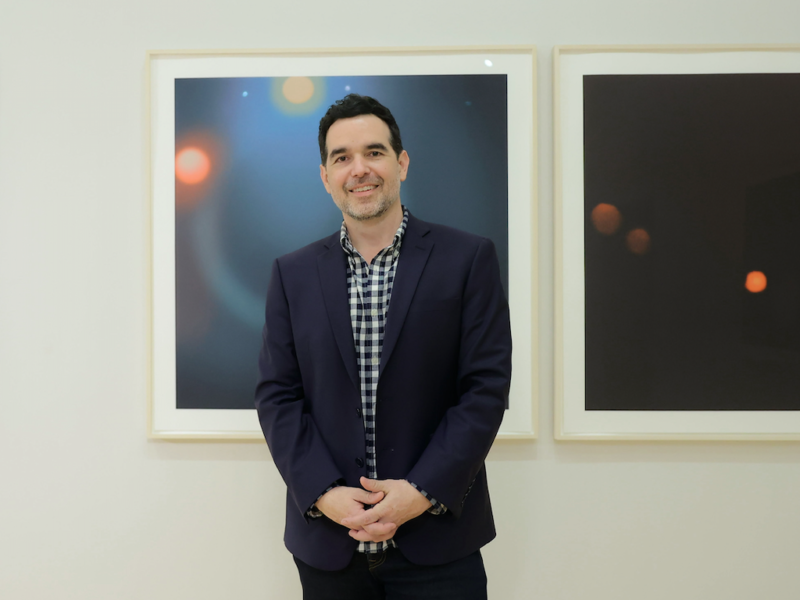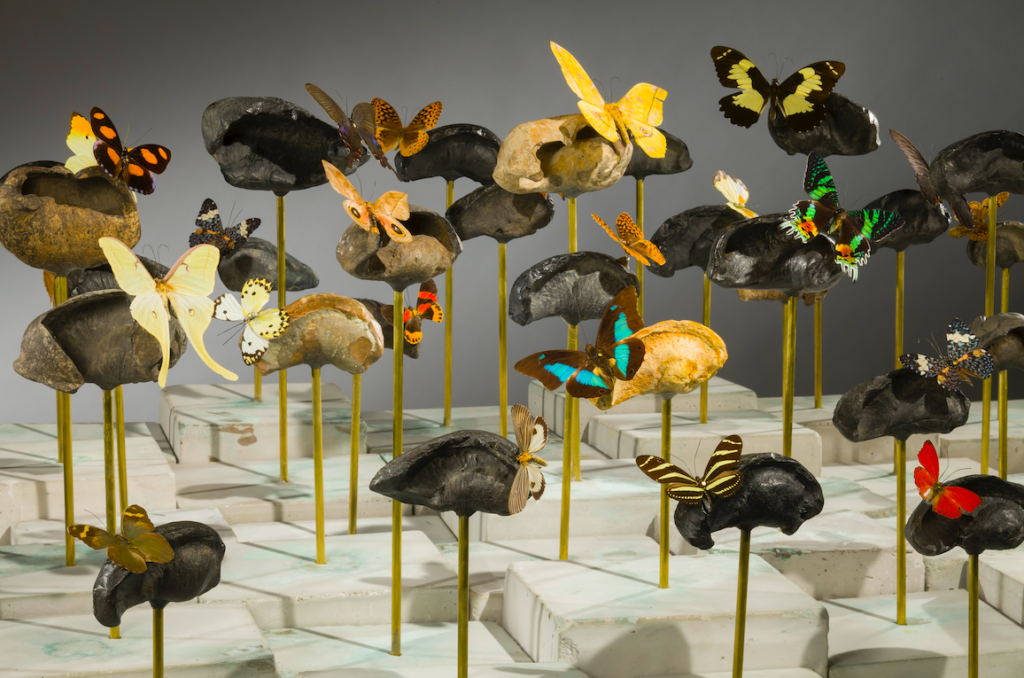INTERVIEW: Head to outer space with Dario Robleto, but first stop in TX
Photo: Dario Robleto (b. 1972), Ancient Beacons Long for Notice (in-process image), 2023, UHD video (53:00), Courtesy of the artist, © Dario Robleto.
Art enthusiasts can head to outer space without leaving planet Earth, that is if they find themselves at the Amon Carter Museum of American Art in Fort Worth, Texas. This summer, the museum is hosting an exhibition of Dario Robleto’s work called The Signal, highlighting the artist’s multi-year examination of the Golden Record, a gold-plated phonograph recording containing sounds and images selected in the late 1970s by a team at NASA to portray life on Earth to extraterrestrials, according to press notes.
In the exhibition, visitors can check out Robleto’s latest film, Ancient Beacons Long for Notice, a 70-minute work that serves as the third and final installment of a trilogy of films centered on the Golden Record (the first two are called The Boundary of Life Is Quietly Crossed and The Aorta of an Archivist). This new one focuses on the first audio recording of warfare, which was a candidate for the Golden Record, but ultimately didn’t make the final cut. This omission, and the general lack of recordings about injustice and destruction on the planet, inspired Robleto to give a “full accounting” of what’s happening on Earth.
In addition to the film screening, which will play on loop in the museum space, there’s an accompanying room of Robleto’s physical works, which provide context to Ancient Beacons.
Maggie Adler is the curator of paintings, sculpture and works on paper at the Carter. She also serves as curator of The Signal, which continues until Oct. 27 at the museum. “It’s really a joy and inspiration to work with Dario, so I’m thrilled,” Adler said in a recent Zoom interview. “Every time we speak to him, some other nuance of his intellect and understanding of the way humanity operates in the world just comes out. You’re like, wow, I wish I had been recording that.”
The connection between the Carter and Robleto began with their common background: The museum is located in Texas, and the artist is originally from the region, having been born in San Antonio and now based in Houston. As an artist, Robleto has had numerous solo exhibitions around the country, including the Radcliffe Institute for Advanced Study at Harvard University (2019); Menil Collection, Houston (2014); the Baltimore Museum of Art (2014); the New Orleans Museum of Art (2012); and the Museum of Contemporary Art, Denver (2011), according to his official biography.
“I knew he was someone I really wanted to work with,” Adler said. “Initially, right before the pandemic, so I think early 2020, I asked Dario if he would be interested in coming to visit the Carter and brainstorming about a project that he might do with us.”
The Carter, as an institution, has been devoted to the concept of successive frontiers. First, there was the western frontier and the expansion into the traditional land of Native American tribes. Then, there were philosophical frontiers that touched upon art and academia. Adler wanted to go one step further.
“I thought, well, space is the final frontier,” she said with a laugh. “So I sort of approached him with a general notion about something to do with space and something to do with the connection of the body to space. He was supposed to come see an exhibition that we had put together, take a look at our collection, take a look at the space. The pandemic hit, and so I did a virtual tour of our galleries. He said, ‘You know, I am actually very invested in a new series of films, and that is what’s really preoccupying my mind these days. But it is related to a lot of the things we’re talking about, which is how do you communicate the human spirit, how do we engage with the expansiveness of space, and would you be interested in doing that project?’ And I am always focused on what the artist wants to do. I would rather he do a project that’s not imposed upon him but grows organically out of what he really wants to achieve.”
Eventually the Carter signed on board and joined with the Santa Barbara Museum of Art, which is co-curating The Signal. For this new project, Robleto was interested in presenting a film, but Adler is more of an objects-oriented curator. So, she and the Santa Barbara team thought of ways to contextualize the film with other works by the artist.
“We’ve never shown a 60-plus-minute film in the context of the Carter outside of a film screening, so I’m really interested to see if people sit down and then sit through the whole film, which I think they will,” Adler said about the centerpiece of the exhibition, Ancient Beacons Long for Notice. “He did a screening for us of one of the other films. He normally doesn’t do theater screenings. They’re really meant to be seen in a museum space, but he did a screening for us. And I was just completely riveted. I sat there with my mouth open gaping for 60 minutes, so I suspect people are very much drawn in. But it’s not particularly linear, so people could walk into the space, not even sit down, watch five minutes of the film and really be provided with food for thought. There’s no wasted part of the script. There’s no backstory that gets you into the action of the film.”
Adler added: “They’re picture poetry, so you don’t have to understand a particular narrative. I think it would be great for the totality of what he’s trying to communicate to sit and watch the whole film, but it’s not necessary.”
By John Soltes / Publisher / John@HollywoodSoapbox.com
Dario Robleto: The Signal runs through Oct. 27 at the Amon Carter Museum of American Art in Fort Worth, Texas. Click here for more information and tickets.



